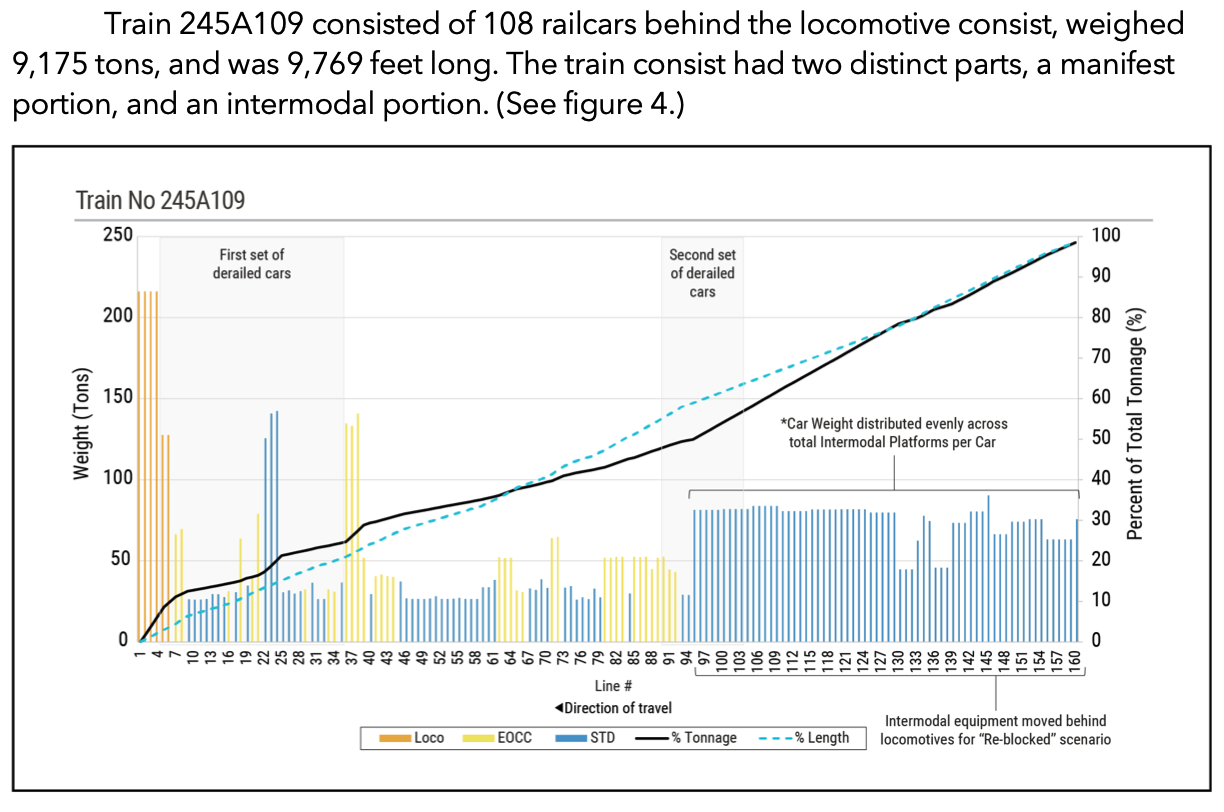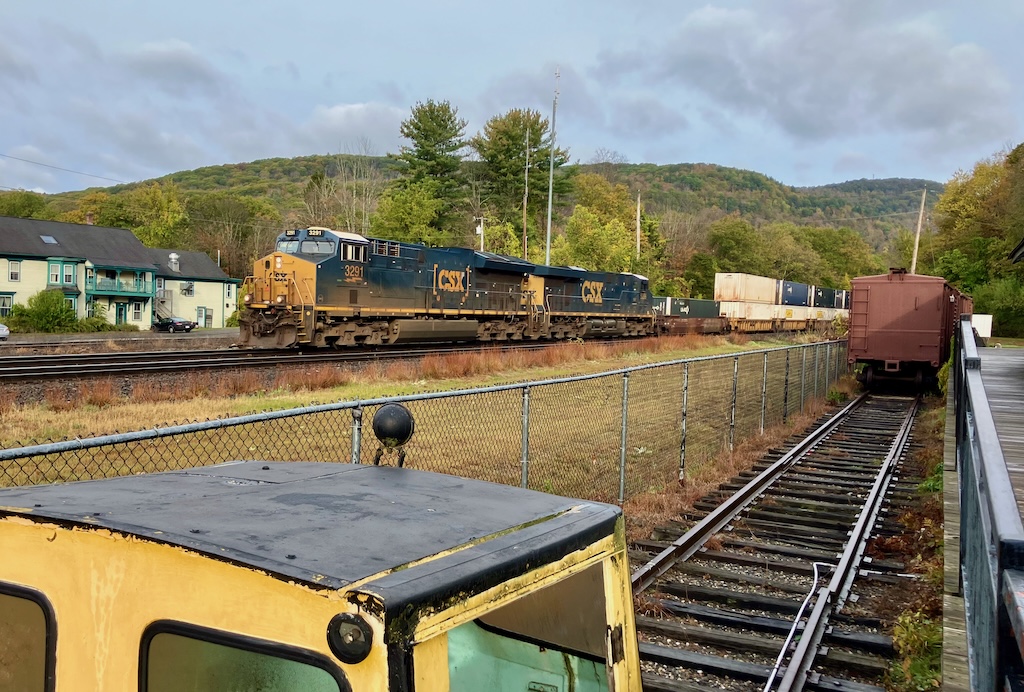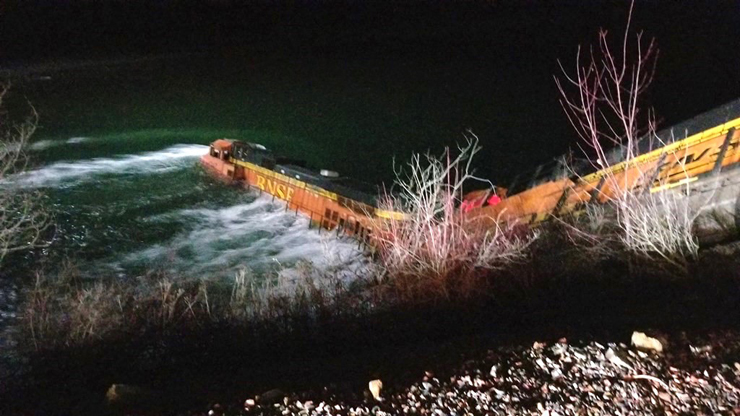
WASHINGTON – A combination of excessive in-train forces and the pairing of dead-in-tow locomotives that lacked alignment control couplers was the probable cause of a 2023 Norfolk Southern derailment in Alabama, the National Transportation Safety Board said today.
Two locomotives and 37 cars derailed in the March 9 wreck on the Alabama East End District near Anniston, Ala. No one was injured and no hazardous materials were released.
NS train 245A109 consisted of six locomotives at the head of the 108-car train. Of those cars, 34 were loaded and 74 were empty. The dead-in-tow locomotives, RMEX 06 and 08, were not equipped with alignment control couplers that resist lateral coupler movement under compressive in-train forces. They were the fifth and sixth locomotives in the consist.
NS rules prohibit locomotives without alignment control couplers from being coupled together. The locomotives were coupled together, however, and picked up from Bluffton, Ind., on Feb. 24, 2023. An NS inspection before the first movement of the locomotives did not identify the absence of alignment control couplers, the NTSB said today in its final report on the accident. The couplers are rare: Only three units on the NS roster are not equipped with alignment control couplers.
At the time of the derailment, the 9,715-ton westbound train 245A109 was negotiating 10 curves while rolling down a 1.29% grade. The derailment involved two sections of the train: Two locomotives and 29 cars at the head end and eight cars at the rear of the train.

The 9,769-foot train had 88 manifest cars at the head end, including a block of 32 empties. Mixed in the manifest section of the train were 38 cars with end-of-car cushioning devices, which may contain as much as 30 inches of slack compared to a standard coupler’s 12 inches.
The 89th car began a solid block of loaded intermodal cars that included eight five-well double-stack cars that weighed 4,914 tons. “This block was listed on the crew’s paperwork as 20 railcars, but when broken down into individual segments, this portion of the train equated to 65 loaded railcars,” the NTSB said.
NS train building rules in effect at the time said that intermodal well equipment must be placed at the head 25% of a consist when practicable, and that blocks of 30 or more empty cars must be placed at the rear of trains whenever practicable.
The placement of the 32 empties toward the front of the train and loaded intermodal equipment on the rear, train 245A109 was not in compliance with NS train build rules, the NTSB said. However, the phrase “when practicable” allowed NS to prioritize placement in the train for destination blocking “in a manner that did not comply with equipment restriction rules,” the NTSB said.
The safety board said that the engineer used dynamic brakes to slow the train’s descent. “This braking of the locomotive consist, as well as a recent application of the train braking system, caused the slack to run in toward the locomotives when the intermodal block of railcars on the rear of the train came over the crest of the grade,” the NTSB said. “The wave of in-train forces peaked in the locomotive consist and the railcars directly behind the locomotives.”
The forces likely caused damage observed to the coupler blocks on the dead-in-tow locomotives. The in-train forces transitioning from a longitudinal force to lateral force was exaggerated by the nonalignment control couplers, the safety board said. And that exceeded the amount of force the rail under the locomotives could withstand, the NTSB concluded.
A post-accident simulation, with cars arranged to be in compliance with NS rules, found that the train would have been unlikely to derail, the NTSB said.
Before the accident, NS was in the midst of an “ongoing data-driven project to make changes to their equipment restriction rules,” the NTSB said. The rule changes were issued the day before the accident but were not scheduled to go into effect until the following Monday.
The railroad also strengthened its rules covering inspection and coupling of locomotives without alignment control couplers.














If you talk to museums, you’ll finf they’ve had trouble for years getting big roads to move engines without alignment control.
This is strictly PSR in action.
Sure, the N-A couplers were a part of it. However, the train make-up was the critical factor. This is reminiscent of the CN derailment where long travel cars pushed a short tank car off the track, causing the derailment.